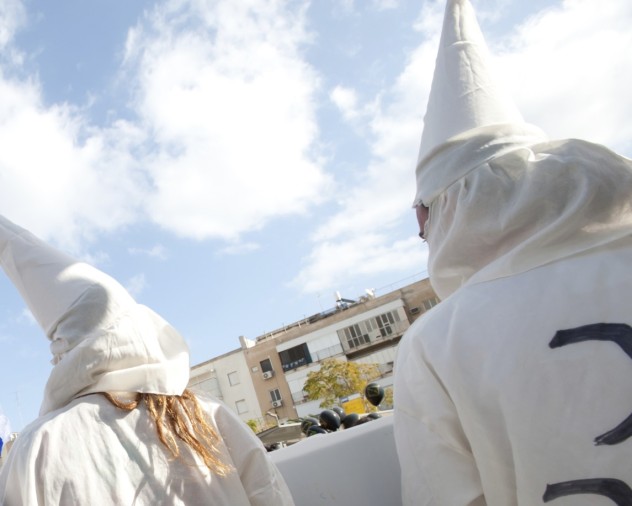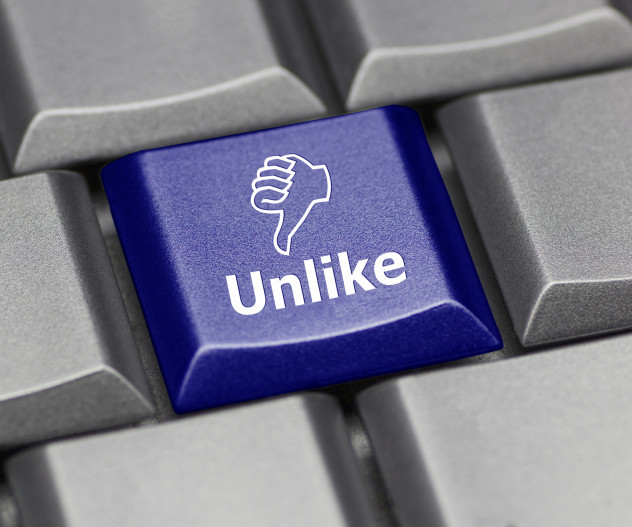 Animals
Animals  Animals
Animals  Weird Stuff
Weird Stuff 10 Weird Things People Used to Do at New Year’s
 Our World
Our World 10 Archaeological Discoveries of 2025 That Refined History
 Weird Stuff
Weird Stuff 10 Fascinating Facts You Might Not Know About Snow
 Miscellaneous
Miscellaneous Top 10 Things Crypto Was Supposed to Change & What Actually Did
 History
History 10 Huge Historical Events That Happened on Christmas Eve
 Music
Music 10 Surprising Origin Stories of Your Favorite Holiday Songs
 History
History 10 Less Than Jolly Events That Occurred on December 25
 Weird Stuff
Weird Stuff 10 Funny Ways That Researchers Overthink Christmas
 Politics
Politics 10 Political Scandals That Sent Crowds Into the Streets
 Animals
Animals 10 Species That Refused to Go Extinct
 Weird Stuff
Weird Stuff 10 Weird Things People Used to Do at New Year’s
 Our World
Our World 10 Archaeological Discoveries of 2025 That Refined History
Who's Behind Listverse?

Jamie Frater
Head Editor
Jamie founded Listverse due to an insatiable desire to share fascinating, obscure, and bizarre facts. He has been a guest speaker on numerous national radio and television stations and is a five time published author.
More About Us Weird Stuff
Weird Stuff 10 Fascinating Facts You Might Not Know About Snow
 Miscellaneous
Miscellaneous Top 10 Things Crypto Was Supposed to Change & What Actually Did
 History
History 10 Huge Historical Events That Happened on Christmas Eve
 Music
Music 10 Surprising Origin Stories of Your Favorite Holiday Songs
 History
History 10 Less Than Jolly Events That Occurred on December 25
 Weird Stuff
Weird Stuff 10 Funny Ways That Researchers Overthink Christmas
 Politics
Politics 10 Political Scandals That Sent Crowds Into the Streets
10 Egregious Hate Crime Hoaxes
Most people are obviously upset when people hatefully target others for their characteristics. What is also upsetting is when people fake crimes, whether it’s to draw attention to themselves, redirect attention from a bad situation, or to advance some social agenda. When people fake hate crimes, it increases paranoia, expends the resources of law enforcement, and weakens the social bonds within the community. Over the past few decades, there have been numerous phony claims. Here are some of the most ridiculous.
10Louisiana Burning

The Louisiana State Police received an urgent telephone call on October 21, 2012 from Sharmeka Moffitt, a 20-year-old Winnsboro woman. The young woman claimed that racially indeterminate men wearing white hoods had doused her with flammable liquid and set her ablaze at a local park near a walking trail. They had also written “KKK” and a racial slur on her car and then left her for dead. The medics responded, and they took her to LSU Health Sciences Center as she had suffered severe burns over 50 percent of her body, leaving her in critical condition and needing surgery. Who would do such a thing to this young woman?
Social media accounts spread the news of the alleged attack. The NAACP got word of the incident, and local police invited the FBI to investigate the case. Otis Chisley, the president of the local branch of the NAACP, said that he would wait for more facts before coming to a conclusion about what happened. However, he mentioned that Klan activity, although clandestine, was still a problem in Louisiana. Kevin Cobb, the local sheriff, said that he would seek justice.
Later, after two days of investigation, the local, state, and federal agencies determined the perpetrator of the vicious attack: Sharmeka Moffitt. Winnsboro Police Chief Lester Thomas revealed that the authorities had found a lighter and bottle of lighter fluid with her fingerprints on them. There was no evidence that anybody else was even in the area at the time. The investigators had a news conference on October 23 where they told the public that Moffitt had set herself on fire. Her family was shocked at the outcome of the investigation, but they said that they were appreciative for the efforts of law enforcement.
Moffitt failed to reveal her motive. Later, police arrested her on charges of false reporting and terrorizing. Although she could face up to 25 years in prison, probation is more likely because she was a first-time offender.
9HOA Feuding

Cristel Conklin and Aimee Whitchurch were a lesbian couple who had been living in their Parker, Colorado condo for half a year, ostensibly without any trouble. However, one Friday night in October 2012, someone spray-painted “Kill the Gay” across the garage door and drew a target on the front door. The next night, the threats continued when they found a noose on the doorstep. What was going on in this sleepy bedroom community?
The couple claimed that the hate was the result of feuding between them and their homeowners association (HOA). The HOA had accused them of not cleaning up their dogs’ feces. The couple disagreed with the HOA’s assertions. Earlier, local news had reported about the struggle between the couple and the HOA and, during an interview with Conklin, the news had identified her as a lesbian.
After making complaints to the HOA about the hateful graffiti, they claimed that someone had keyed their car and dumped dog feces in their yard, possibly in retaliation. The president of the HOA did put primer over the red graffiti, but the couple claimed that he did a poor job which shows that the HOA didn’t care that people had targeted them. The Douglas County Police started a hate crime investigation and increased patrols around the area as the couple said that they were going to contact the FBI if there wasn’t a thorough investigation by local police. Believing that the local police department wasn’t serious, the couple called the FBI.
The FBI conducted a thorough investigation. They tested for paint residue on the couple’s palms and they asked them to take a lie detector test. The couple declined. After getting witness statements, the FBI determined that the couple spray-painted the words themselves. The police charged them with criminal mischief and false reporting. The couple still says that they didn’t spray the graffiti and that an unstable roommate that later moved out was responsible.
8The Hit List

It was February 2012, and something was stirring up the University of Wisconsin–Parkside. It wasn’t any of the planned Black History Month celebrations, but it was a person creating terror across the campus in a series of escalating incidents. Students became emotionally distraught and some even left the university; the school increased campus security, and later the administration called a university meeting to discuss whether there was any serious danger to students.
It began on a Wednesday when a group of students found a bunch of rubber bands tied together. Some people said the rubber bands looked like they formed the shape of a noose. The next morning, Aubriana Banks received a second “noose” made of plastic string. Later that night, students came across fliers that said, “N——rs will die in 2 days. No n——rs wanted.” At the bottoms of the fliers, the perpetrator had written 13 names of black students.
It ended up being Khalilah Ford, a black student, who created the list. The reason why she made a hoax letter was that she didn’t believe that the university was taking the “noose” incidents seriously. She thus decided to send a hoax letter to another black student hoping to draw further attention.
It isn’t clear whether the noose incidents were actually motivated by hate, another hoax, or even if the objects were supposed to represent nooses. Sheriff David Beth said during the investigation, “I don’t think these nooses are what people would picture.” How did the detectives realize Ford was behind the hoax? Her name was the only name correctly spelled on the list.
The police charged her with disorderly conduct and obstructing an officer. Because of her actions, the university immediately suspended her. Embarrassed, Ford did not even try to fight the university’s action and withdrew from the university.
7Student Blues

Trinity International University sent Latino and black students off-campus to an undisclosed location in April 2005. The administration didn’t know when or if the students would return to campus housing. The students didn’t want to be there, but the campus evacuated them to a secluded location because a mysterious person had sent threatening, hate-filled letters to two black students and one Hispanic student through campus mail over a two-week period.
Eerily, the unknown person sent the third letter around April 20, the anniversaries of Hitler’s birthday, the Oklahoma City bombing, and the Columbine school shootings. It stated that the writer had seen the target at chapel and had a gun but had hesitated to shoot. For added protection, extra guards and police officers patrolled the campus location while the religious college prayed for the safety of their fellow students. Because of the fearful situation, even white students began to leave the campus. The majority called it what it was: terrorism.
When the university found out who it was creating the reign of terror, it shocked them. Alicia Hardin, a black student originally from nearby Chicago, had written the letters. She had become extremely unhappy at the university. She had originally wanted to go to Jackson State University in Jackson, Mississippi, and she wanted to transfer, but her parents refused to allow her and preferred she continue at the evangelical institution. She wanted to create a situation so that her parents would view the environment of Trinity International as too dangerous for her and thus they would have no choice but to relent to her demands.
Since she was a black student, the university evacuated her along with the other minority students. Students recalled her complaining about the school while they remained off-campus. With the police charging her with disorderly conduct, thus leading to her leaving the university, she got her wish.
6Flip-Flop Your Story

Joseph Baken, from Missoula, Montana, told police that he had gone out to celebrate his 22nd birthday at the Missoula Club on a Sunday in August 2012. He claimed that after having asked some people where a gay bar could be located, three men jumped him. At the police station, the officers took pictures of his bruises and cuts. The news story soon went viral, with gay-rights activists on Facebook, Tumblr, and the Huffington Post highlighting the incident to reason that homophobia afflicted the US as a whole and rural Montana particularly. Trying to protect their city’s reputation, 560 people in Missoula planned to attend a pub crawl to support victims of violence.
However, all wasn’t what seemed to be. When the police asked for tips concerning the crime, an anonymous individual sent in a cell phone video to the Missoula Independent and the local police department. The video showed that Baken had been trying to impress his friends by attempting back flips that Sunday night. He had literally fallen flat on his face. The following Tuesday, he turned himself in for filing a false report, and the authorities swiftly prosecuted him because of all the outrage that he had caused locally and on the Internet. Although they sentenced him to both 180 days in jail and a $500 fine, the jail sentence was suspended.
5The Jewish Neo-Nazi

A week before Halloween 2007, Sarah Marshak, a freshman residing in Mitchell Hall at George Washington University, complained to the administration that someone had drawn a swastika on the whiteboard hung on her dorm room door. Over the next few days, not only were more swastikas found on her door, but a fellow Jewish student found a swastika drawn on her whiteboard as well. Then, there was another swastika on Marshak’s door, and then another and, finally, some students found another drawn on the fence of the George Washington hospital. After Marshak claimed that she had received two more drawings, the university called the FBI.
Over the next two days, a perpetrator defaced another dorm, New Hall, by drawing another swastika and writing “n——rs” on a poster for a black engineering student group’s event. Things were appearing to get out of hand when footage from a hidden camera revealed the “Nazi.” Marshak drew at least three of the swastikas on her whiteboard. While another student was responsible for the later graffiti in New Hall, the campus and police were suspicious but not sure whether she drew the first one. She claimed that she wanted to draw attention to the first swastika by drawing more swastikas. Hours before her admission, she had denied that she was responsible at all. Due to her breaking the school’s honor code, the university expelled her.
4Life—Can You Hack It?

It was Halloween 2014 and Vincente Perez, a 20-year-old University of Chicago student, was upset. He had just seen an Asian student dressed up as a “cholo” walking across campus with some other students. He tried to tell the student that his costume offended him, but the group just blew off his concerns. Concerned about the university’s atmosphere, he wrote a letter to the administration requesting a meeting to discuss the bigoted atmosphere on the campus.
They met, but Perez and fellow activist Derek Caquelin were still dissatisfied with the university’s response. He wanted required courses on race and ethnicity, increased efforts to hire minority faculty, and disciplinary protocols to handle those involved with what he viewed as discriminatory actions.
On a Tuesday night in November, someone hacked the Facebook account of Derek Caquelin and left a message threatening rape against him and Perez. Caquelin and Perez claimed that a shadowy group, the UChicago Electronic Army, was responsible for the hack. Soon, the college requested a federal investigation of the incident while they also announced they would hold sessions for the university community concerned about the racial climate. The same day as the announcement, Caquelin posted on Facebook that he had made the hacking incident up. Both he and Perez, however, continued to say that the hoax shouldn’t take away from the “real” atmosphere of racism at the university.
3All In The Family

Fatima Alhimidi found her bloodied mother sprawled on the kitchen floor in March 2012. Someone had beaten Shaima Alawadi to a pulp and left a note that said, “This is my country. Go back to yours, you terrorist.” Two days later, she died due to the blows that had fractured her skull. Because of the threatening note, and because Shaima wore a hijab, the police initially believed that the attack was a hate crime.
Due to the viciousness of the crime, it even made international news. The State Department offered condolences, and Iraqi officials attended her funeral, as she was a Shiite from that country who had immigrated with her family after a failed rebellion in the 1990s. Nevertheless, after further investigation, the evidence pointed away from an attack by an outsider and toward an extreme incident of domestic violence.
Laboratory tests showed that someone planted the note found at the scene, as it was a copy of a note found outside the home earlier. Further evidence pointed to the individual who would have a motive for murder: her husband, Kassim Alhimidi. When Kassim first spoke with the police, he didn’t mention that his marriage to the victim had collapsed. Investigators later found divorce papers in his wife’s car and learned that Shaima was planning to move from their San Diego home to Texas. He also failed to mention there had been fierce arguments over Fatima’s relationship with a young Assyrian Christian man, and that he had been arranging a marriage between her and a cousin in Iraq. Finally, it came out that his wife’s relative heard him apologize to Shaima for his actions when she was in the hospital dying from the attack.
The court proceedings turned into a circus as Kassim’s outbursts and antics halted the trial at various times. The jury, however, found him guilty of first-degree murder, and when they sentenced him 26 years to life, his sons shouted out and deputies even had to drag one of the sons from the room. Their daughter, Fatima, attended the trial to testify, but she did not attend the sentencing; she instead sent a brief statement showing her disgust at her father’s actions which had destroyed their family
2God Hates Liars

Olander D. Cuthrell, a minister of music at Good Shepherd Baptist Church in Petersburg, Virginia, was in trouble. He was three months behind in rent. The check that he had written the proprietor had bounced, and soon the proprietor would evict him and his family. Then, an arson attack targeted his family on March 15, 2013. Cuthrell’s oldest son discovered that the front porch and the car were on fire and extinguished the blaze before it consumed the rest of the house with Cuthrell and four other family members resting inside.
When Cuthrell was interviewed, he said that someone had targeted his family because they were black. During the interview, he pointed out that someone had written racial slurs on the sides of his house. To the police, the story wasn’t adding up and, after a brief investigation, they arrested him. Cuthrell admitted that he set the fires, saying that financial problems and stress revolving around the legal troubles of another son led him to want to commit suicide. Although it was sad that Cuthrell felt so desperate, this was not the first time that he lied. Twelve years earlier, he claimed to be a robbery victim to cover for his theft from his employer. Because of his current lie, the court sentenced him to two years in prison.
1Still Delusional

The community of Portland, Oregon was in an uproar over attacks by alleged vandals that began in May 1992. Azalea Cooley was a disabled black lesbian suffering from brain cancer, and she claimed to be a victim of a rash of harassment. Someone painted a swastika on her house along with the phrase, “Burn, N——r, Burn.” Later, there were more painted swastikas, demeaning letters, burning crosses, and even a black baby doll with a .38-caliber bullet lodged in it. Because of the extreme nature of the harassment, multiple community activists and the police jumped to Cooley’s defense.
In September, the harassment continued, and the community activists still rallied around Cooley; they had hosted multiple vigils throughout the summer. The police, however, became suspicious about the attacks. Without telling the police chief, investigators set up a hidden camera to see who was continually trespassing on the residence to intimidate Cooley. The footage showed Cooley walking past her wheelchair to plant a cross on the lawn to light. When the police showed her the evidence, she slit her wrists. In the hospital, she admitted that not only had she committed the hate crimes, but she also revealed she was neither disabled nor suffering from cancer.
Twelve years later, when she had moved away from Portland, a reporter interviewed her in her new home in California. She claimed that she was now physically and mentally healthy and in a better place. The funny thing is that neighbors reported seeing her in a wheelchair, and mentioned to the reporter that Cooley had said that she suffered from cancer of the spine.
Christopher Fried is a formalist poet and a freelance writer. Check him out at his website.








